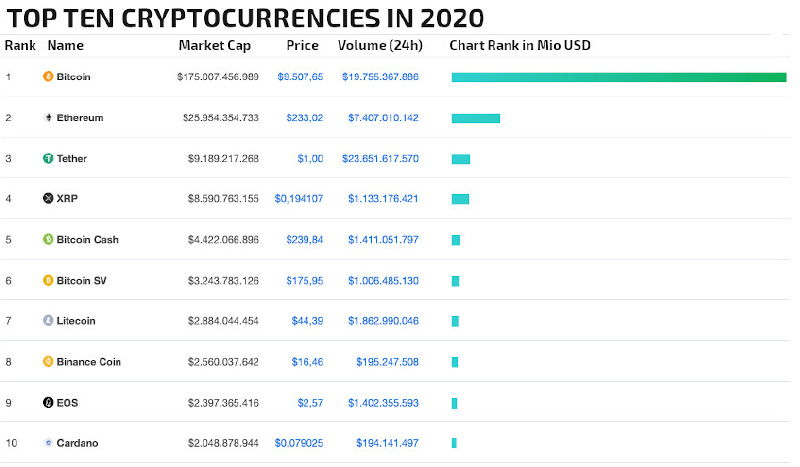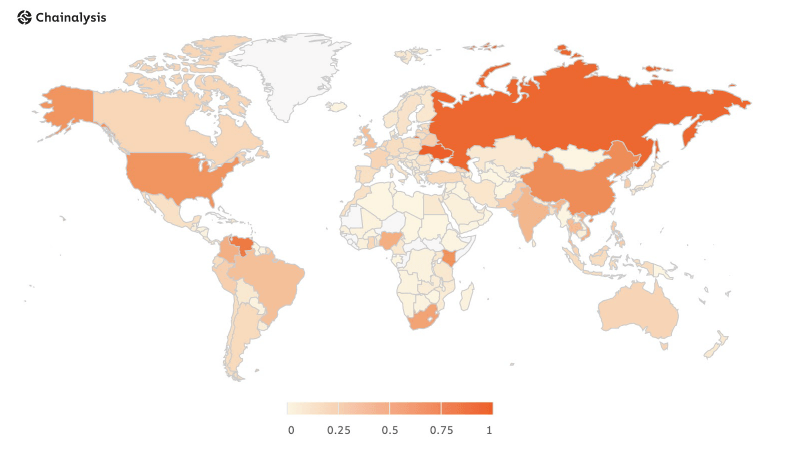- Best Practices ●
- COVID-19 ●
- Industry Trends ●
- Partners ●
- Product ●
How to Use Bitcoin With QR Code and Why It’s Easier
You’ve probably heard of Bitcoin floating around the news. But how do Bitcoin and other cryptocurrencies work? And why would you use them with QR Codes to make digital transactions? Read on as we’ve got the answers to these questions and more.
-
Table of contents
- What is cryptocurrency?
- An overview of Bitcoin history
- Cryptocurrency statistics that’ll make you want to use it
- Why is using Bitcoin with QR Codes a good idea?
- QR Codes speed up the transaction process
- QR Codes support multiple types of cryptocurrencies
- Bitcoin QR Code is free and never expires
- Customizable QR Codes for further branding
What is cryptocurrency?
Cryptocurrency is a form of digital currency that can be sent and received 100% electronically. It’s not monitored by any central government and is fully powered by Internet users themselves. Although there are now hundreds of versions of cryptocurrency, Bitcoin is the most widely used. Cryptocurrency is often used for peer-to-peer transactions, but more brands have added it to their payment models. Two such examples are the automotive industry brands Beepi and Karma that allow vehicle purchases with Bitcoin.

Bitcoin functions off of blockchain technology. While the system behind it is quite complex, stated simply, it means that each Bitcoin is a digital file that’s stored in a user’s digital wallet. This digital wallet is what’s used to send and receive Bitcoin among users. Each of these transactions is then recorded in a public list known as the blockchain, which stops users from making false transactions. Even though the transactions themselves are public, Bitcoin use can’t be traced to individual people because transactions are encrypted and occur using a 34 digit Bitcoin address that’s specific per user.
An overview of Bitcoin history
The concept of cryptocurrency arose out of the need to simplify digital transactions. Furthermore, the founder also wanted to create a decentralized digital currency that didn’t require personally identifying data connected to transactions like that which occurs with traditional banks. The actual founder of Bitcoin as an electronic currency is unknown, though its invention in 2009 under bitcoin.org is attributed to an individual or group of individuals known as Satoshi Nakomoto. Many theories attribute Bitcoin to various creators, but no one has yet to come forward as the founder.
Cryptocurrency statistics that’ll make you want to use it
Nonetheless, since 2009, Bitcoin’s use has skyrocketed. The longer the Bitcoin and other cryptocurrencies are available to the public, the more widely they are used. On a global scale, Turkey is the top country for cryptocurrency use, followed by Brazil and Colombia.

Though the US is lower on the list from above, as of November 2019, nearly 40% of Americans stated an openness to making payments using Bitcoin. Furthermore, the amount of Americans between the ages of 25-34 planning to invest in Bitcoin in the future is at the same rate, so it’s quite possible that with time, Bitcoin usage could become a typical occurrence across the board.
What’s more, the rise of the fintech industry can largely be attributed to blockchain technology, because it’s how they can establish user trust by creating secure software. So there are twofold benefits to the development of cryptocurrency in connection with blockchain technology.
Who uses Bitcoin?
The reasons why both users and brands are getting more comfortable with the idea of Bitcoin transactions is they simplify digital transactions, particularly via mobile when combined with QR Codes, as well as increase transaction security through encryption. This convenient integration with mobile technology has heavily influenced why the younger generation is embracing it more and more and will continue to do so for the foreseeable future.
With a predicted 400 million Bitcoin user base by 2030, brands absolutely need to take note of this if they want to remain competitive because offering modern forms of digital payments are the new norm. The infographic below outlines the current user demographics for Bitcoin. Nevertheless, these figures will encompass a wider scope of users as time progresses.

Why is using Bitcoin with QR Codes a good idea?
To send and receive bitcoin, each user needs a 34 digit Bitcoin address. It looks something like this:

For regular Bitcoin users, typing in this number each time is extremely tedious. QR Codes have already long been used to streamline mobile transactions, so when combined with Bitcoin, the premise works the same. The only difference is that when you make a payment with a Bitcoin QR Code, you use your digital Bitcoin wallet instead of your bank account.

QR Codes speed up the transaction process
QR Codes speed up mobile transactions, not just for Bitcoins, but for anyone who uses QR Codes because they connect users to a particular purchase link within seconds—especially on print materials.
Furthermore, many countries are gearing up for “cashless societies”, meaning a strong prioritization of digital-only payments. As a result, QR Codes have been used to make the digital payment process via smartphone convenient. When it comes to Bitcoins, both buyers and sellers can scan QR Codes to implement bitcoin transactions in the same manner. Bitcoin QR Codes can easily be placed near cash registers or around products to streamline the purchase process.
QR Codes support multiple types of cryptocurrencies
In the case that traditional Bitcoin isn’t your cryptocurrency of choice, our Bitcoin QR Code supports multiple types of cryptocurrencies as well. Our other supported cryptocurrencies include:
We’re also happy to add additional cryptocurrencies for our users. Please contact us if you would like to discuss this further.
Bitcoin QR Code is free and never expires
Bitcoin QR Codes are a Static version of QR Codes, meaning that once you create it, the QR Code is permanent and will always bring users to that content as long as anyone can physically scan it with a smartphone.
Static QR Codes are best for one-time use because they can’t be edited or tracked. In the case that you’d like to track and edit your QR Codes after printing, you’ll need to choose a Dynamic QR Code solution instead.
Customizable QR Codes for further branding
Another unique benefit of creating your Bitcoin QR Code with QR Code Generator is that you can customize your QR Code’s appearance for placement on print materials. This is particularly useful for brands that want to use QR Codes to receive bitcoin payments because they can be adapted to your design requirements. You can style these QR Codes with a brand color, a logo or image in the middle, as well as custom frames with a CTA (call to action). On an important note, these branding elements are another method for ensuring user trust when scanning your QR Code as it fosters brand awareness.
We are currently in the process of giving our Bitcoin QR Code full-scale customization capabilities, so it’s a good idea to sign up now so you can access these features once they become available.






 Add custom colors, logos and frames.
Add custom colors, logos and frames.
